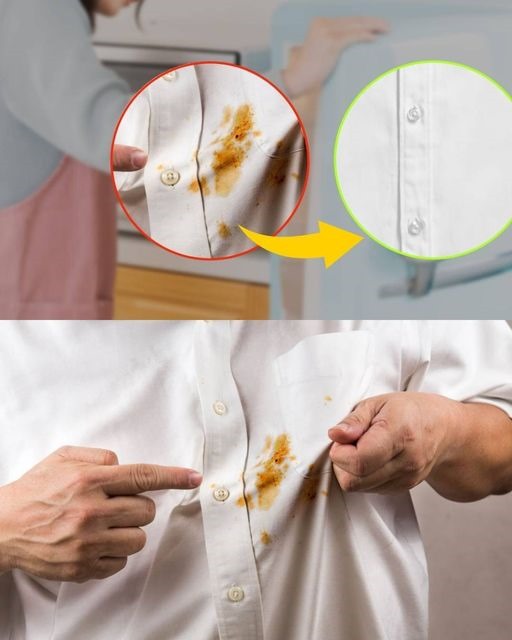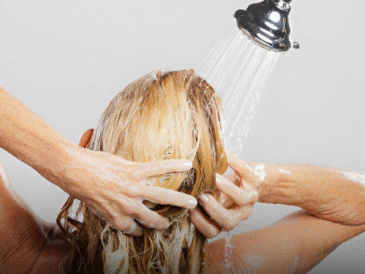We’ve all been there: you’re enjoying a delicious meal, savoring every bite, when suddenly – disaster strikes. A splatter of tomato sauce, curry, or greasy gravy lands on your favorite shirt or blouse. Before you know it, you’re left staring at an unsightly stain, helpless and frustrated. While sauce stains can seem like a nightmare, don’t worry! The solution is simpler than you might think. All you need is an ingredient that’s probably already sitting in your fridge: milk.
In this article, we’ll dive deep into how milk can help you get rid of those pesky sauce stains on your clothes in no time. We’ll explore how this common household ingredient works, the science behind its stain-fighting properties, and why it’s a must-try hack for anyone who wants to save their clothes from permanent damage. Along the way, we’ll also offer some additional tips, tricks, and cleaning methods to ensure you’re prepared for any future stains that come your way.
The Problem with Sauce Stains
Sauce stains are one of the most common types of stains people encounter, and they can be difficult to remove because of the ingredients involved. Tomato-based sauces, gravies, or creamy dressings often contain oils, fats, acids, and pigments, all of which can bond with the fabric and make the stain stubborn. Depending on the type of sauce and the fabric of your clothing, you might find yourself scrubbing away in frustration, but without much success. In some cases, the stain can become set if not treated immediately, which can lead to permanent discoloration or damage.
This is why timely action is essential. The longer a stain sits, the harder it becomes to remove. If you’re caught without a stain remover, don’t fret—milk, which you likely already have in your fridge, is a great option to tackle the problem.
Why Does Milk Work on Sauce Stains?
Milk may not be your first thought when it comes to removing stains, but it has several properties that make it effective against a wide range of common stains, including those from sauces. Here’s a breakdown of how milk works:
1. Proteins in Milk
Milk is rich in proteins, particularly casein, which has been shown to be effective in lifting and breaking down grease and fat. These proteins are attracted to the fat molecules in the sauce stain, helping to loosen and lift the stain from the fabric fibers. When milk is applied to a sauce stain, it acts as a natural solvent, dissolving the oils and pigments that make up the stain.
2. Mild Acidity
Milk is slightly acidic, which helps it break down the components of certain types of stains. For example, it can help neutralize the acidity in tomato-based sauces like marinara or ketchup. The mild acidity of milk won’t damage most fabrics, making it a safe and gentle option for stain removal.
3. Fat Content
The fat content in milk also helps with lifting greasy stains. Fat acts as a natural emulsifier, helping to break down oils and grease that are often found in sauces. Grease-based stains, such as those from curry, cheese sauces, or gravies, are notoriously hard to remove, but milk’s fat content makes it a powerful tool for cleaning them up.
4. Moisture and Hydration
Milk’s moisture content helps to soften and loosen the stain from fabric fibers. It prevents the stain from setting into the material, which is critical for getting the stain out effectively. When you soak the stained area in milk, it allows for a gentler approach to stain removal, without the need for harsh chemicals or scrubbing that can damage delicate fabrics.
How to Use Milk to Remove Sauce Stains
Now that we know why milk is so effective at removing sauce stains, let’s dive into the step-by-step process for using it to save your favorite garments. The good news is that it’s incredibly simple!
Step 1: Act Quickly
The key to successfully removing a sauce stain is addressing it as soon as possible. The longer the stain sits, the more difficult it will be to remove. If the sauce is still wet, gently blot the area with a paper towel or cloth to absorb any excess liquid. Do not rub the stain, as this can push it deeper into the fibers. If the stain has already dried, don’t worry—milk can still help, but the sooner you treat it, the better the results.
Step 2: Heat the Milk
While you don’t need to boil the milk, you’ll want to warm it up a bit before applying it to the stain. This helps to activate the milk’s fat content and makes it more effective at breaking down the oils in the stain. Pour the milk into a small saucepan or microwave-safe bowl, and heat it up for about 30 seconds to 1 minute. Be sure not to overheat it, as it should be warm, not scalding hot.
Step 3: Apply Milk to the Stain
Once the milk is warm, pour it directly over the sauce stain on the fabric. Make sure the stained area is completely covered with milk. If the stain is large, you may need to soak it in a bowl or basin of milk to ensure that the entire stain is submerged.
Step 4: Let the Milk Soak In
Click page 2 to continue




